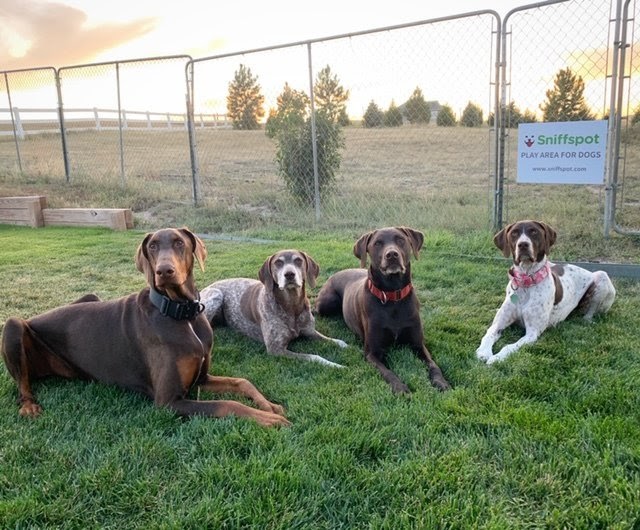Is getting—and staying—in shape one of your New Year’s resolutions? Include your dogs, too; it’s good for their physical and mental health.
But before you haul them out on a five-mile run, talk to your veterinarian about their current condition and the best ways to make sure they don’t suffer from weekend warrior syndrome—the aches and pains we all get (dogs included) when we do too much exercise without building up to it first.
For dogs and humans, fitness requires strength, endurance, flexibility, and good cardiovascular function. The following tips will help ensure that your dog is ready to rock that fitness resolution:
Check your dog’s orthopedic health before getting started. Your veterinarian can make sure hips, knees and elbows are in good shape. This helps to minimize the risk of orthopedic injuries.
Take into account your dog’s size and build as you plan your activities. Not every dog is suited to every type of exercise. Bulldogs tend to sink instead of swim, and spaniels like to zig and zag, so unless they’re well trained, they may not be the best jogging partners. Greyhounds are great running partners but jumping sports can “break” them.
Age matters. Young dogs have lots of energy, but they haven’t finished growing. Jumping and other excessive exercise—especially on hard surfaces—can be detrimental to their musculoskeletal development. Large or giant-breed puppies shouldn’t run or jump repetitively on hard surfaces until their growth plates close, usually when they are 10 to 24 months old. Until then, stick to grass and dirt surfaces for active play that involves running and jumping.
With any dog who isn’t used to regular exercise, start slow and work up to long distances or greater speeds.
Know what types of injuries are commonly seen in your dog’s breed or body type. Couch-potato Labrador Retrievers are prone to cranial cruciate ligament ruptures. Herding dogs can suffer ligament damage because they change direction frequently. Toy breeds and Flat-Coated Retrievers can be prone to patellar luxation. German Shepherds can have spinal problems. Ask your veterinarian what activity-related injuries she sees most often and the types of dogs in which they occur.
Choose an activity that suits your dog’s personality and level of training. For example, does your dog behave nicely in public when he encounters other dogs or people, or will he do best with exercise that can be done away from others? You can find the equivalent of private dog parks, hikes, and yards through website Sniffspot, which connects dog owners with dog-friendly properties available for short-term rentals.
Balance is key. Practice changing direction, both ways, as you walk your dog and continue as you move on to jogging or running. Teach your dog to spin or perform figure-eight movements in both directions. Walking on a balance disc or stepping through the rungs of a ladder are good for balance and building a strong core. (That’s right; a six-pack is important for dogs, too, and not just for attracting admiring looks.)
Don’t overdo things. Rest limits fatigue and helps to prevent injuries. You’ll both appreciate it after a good workout.
This article was reviewed/edited by board-certified veterinary behaviorist Dr. Kenneth Martin and/or veterinary technician specialist in behavior Debbie Martin, LVT.








